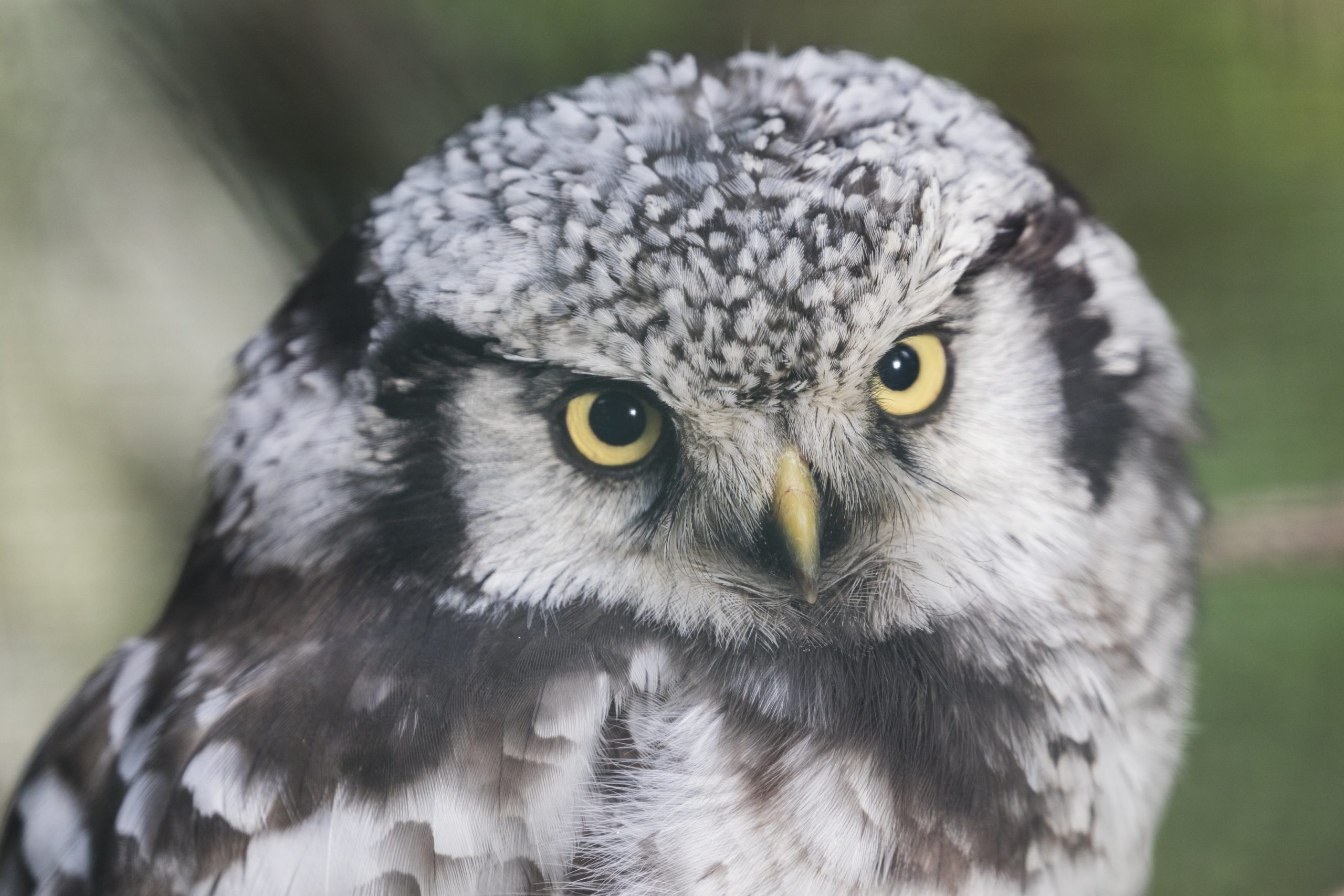
HAWK OWL
LIVING HABITS
The northern hawk owls thrive in open coniferous and mixed forests, and in the north also in the fells. Since hawk owls are burrowers, they prefer areas where hollow logs can be found standing up. Nowadays hawk owls are most commonly found in clear cuttings. A couple of years after the logging the area will be covered with grass providing an ideal habitat for small rodents – and plenty of prey opportunities for the hawk owl. This species that breeds in the north migrates when vole populations change. In some years it can be seen far in the south of Finland.
DIET
The hawk owl is a diurnal and fearless species that mainly preys on small rodents. During times when prey animals are plenty the hawk owls may store part of their prey in case of worse times.
CONSERVATION
Like all owls in Finland, the hawk owl is a protected species by the nature conservation law.
HAWK OWL
Surnia ulula
Class: Aves – Birds
Order: Strigiformes – Owls
Family: Strigidae – Owls
Size: Weight 215-380 g, wingspan 69–82 cm. Females larger than males.
BREEDING: The female lays 5-6 eggs in April-May and incubates for 28-30 days.
LIFESPAN: According to ringing data, the oldest hawk owl has lived to 8 years of age. Oldest individual in Ranua Wildlife Park lived to 9 years of age.


Did you know…
The hawk owl’s name describes the species well. Just like hawks, the hawk owl is active during the day and its appearance also resembles a small hawk; the coloring of the face gives it a stern look, which differs from the round head impression given by the other owls.




